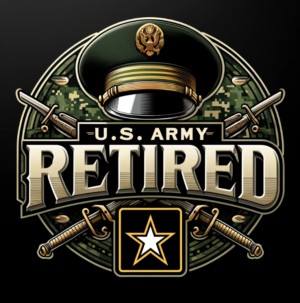PTSD, or Post-Traumatic Stress Disorder, deeply affects many US Army veterans after retirement. From my own experience and talking with other veterans, I’ve seen how hard it can be to find people who truly grasp what it’s like to live with trauma from service. Support groups have given me relief, encouragement, and a sense of belonging that isn’t always possible through formal therapy or family alone. This article offers an all-in-one look at support groups for PTSD in retired US Army veterans, covering what to expect, how to get involved, and how these communities help people start to heal and move forward.

Understanding PTSD in Retired Army Veterans
PTSD is a mental health condition that can develop after someone experiences or witnesses a life-threatening event. For many retired US Army veterans, memories of combat, loss, or traumatic incidents can trigger symptoms long after leaving active duty. PTSD may look different for everyone, but common experiences include flashbacks, nightmares, anxiety, and trouble trusting others. In my case, everyday noises sometimes brought back memories I thought I’d left behind.
According to recent VA statistics, almost 11 to 20% of Iraq and Afghanistan veterans experience PTSD each year. Older veterans from Vietnam or Gulf War eras also report high rates. PTSD is nothing to be ashamed of; many of us carry invisible wounds that deserve understanding and care. Joining a support group made me see right away that I was not alone on this adventure.
What Are Support Groups and How Do They Work?
Support groups are gatherings where people share experiences, coping strategies, and encouragement with others who face similar challenges. While therapy with professionals is valuable, support groups offer peer-led or professionally facilitated environments with a welcoming, understanding atmosphere. Some are organized in person through local VA facilities or community centers; others meet online, making it easy for those who want more privacy or flexibility.
Typically, support groups for PTSD in veterans focus on:
- Sharing stories: Members talk about what they’ve been through, which can relieve tension and give new perspectives.
- Coping skills: Advice and techniques are shared to help manage symptoms each day.
- Building community: Connecting with people who “get it” leads to genuine friendship and less isolation.
Groups may meet weekly, biweekly, or monthly, with some allowing “drop-in” attendance. In my experience, nobody forced me to speak; just listening was enough at first to start feeling a sense of ease.
Benefits of Joining a Veteran PTSD Support Group
Being part of a support group has changed how I live with PTSD in great ways. Some benefits I’ve seen, and that studies back up, include:
- Shared understanding: Fellow veterans quickly recognize the unique aspects of deployment and combat stories that might escape civilians, making conversations feel easier and more genuine.
- Emotional support: When tough dates or unexpected triggers come up, group members check in and offer real encouragement. This connectedness means a lot, especially on rough days or around the holidays.
- Reduced isolation: PTSD often drives people to withdraw, but knowing I have a group to reach out to helps me avoid isolating too much, even on bad days.
- Better coping: I’ve learned tools like mindfulness, reframing negative thoughts, and simple routines that go a long way against anxiety and stress. Hearing other members’ ideas opens up new ways to handle tough moments.
- More confidence to try extra help: Hearing my peers discuss therapy or medications encouraged me to try more options, replacing shame with acceptance.
How to Find Veteran PTSD Support Groups
Finding the right support group depends on your needs and where you live. Some groups welcome all veterans, while others focus specifically on combat or certain service eras. Here are some practical ways to begin:
- Contact your local VA medical center: Most VA hospitals and outpatient clinics have regular support groups for PTSD, often led by clinicians or peer support staff. The VA facility locator is a quick way to spot services near you.
- Veteran Service Organizations (VSOs): Groups like the American Legion, Veterans of Foreign Wars (VFW), and Disabled American Veterans (DAV) hold local and online meetings focused on mental health and camaraderie.
- Online Communities: Digital spaces like the Vet Center, Reddit Veterans Subreddit, and SupportGroups.com let you connect whenever you want, especially if going out feels tough.
- Check with your primary care provider or mental health clinician: Many providers know about community-based groups and nonprofilt organizations that are open to retired military members.
Trying out several groups is perfectly fine until you find a good match. Each group has a different feel and approach; some stick closely to coping with PTSD, while others also talk about reintegration, relationships, or other life challenges veterans face.
Choosing the Right Support Group for Your Needs
Picking a group that suits your comfort and goals really matters. Here’s what I looked for:
- Structure: Do I want a structured session with a facilitator, or do I prefer a relaxed, peer-to-peer circle?
- Group size: Smaller gatherings can feel more personal, while larger groups make it easier to just listen at first and break the ice.
- Location and format: Some veterans like the structure of in-person meetings, while others find online groups less overwhelming and easier to access, especially on tough days.
- Privacy and confidentiality: Knowing a group had clear privacy rules made it much easier for me to feel safe sharing my experiences.
- Special focus: Some groups serve certain groups such as women veterans, older veterans, or people juggling both PTSD and substance abuse challenges.
Checking group guidelines or reaching out to a facilitator in advance can help. Most welcome newcomers who want to observe before speaking up.
Overcoming Common Challenges When Seeking Support
Going into a room—virtual or real—filled with strangers is stressful, even when they’re fellow veterans. I hesitated at first, anxious about being judged or not fitting in. Joining a support group isn’t always simple, but here’s how to make it a bit easier:
- Start slow: You don’t have to talk right away. Sometimes being there, just to listen, eases anxiety.
- Bring a buddy: Some people bring someone they trust to the first session for extra support. That can make the first step less scary.
- Try different approaches: Online meetings are a solid way to warm up before you meet others in person.
- Keep your goals in mind: Every veteran in the group is working through PTSD. Keeping the focus on healing, support, and friendship can help shake off those first jitters.
Coping Strategies Shared in PTSD Support Groups
One of the big perks of these groups is all the real-world ideas shared among members. Strategies that have helped a lot of people include:
- Mindfulness techniques: Grounding, focusing on the present moment, and breathing exercises that help manage anxiety or flashbacks.
- Journaling: Writing in a daily journal helps track emotions and identify triggers, and it’s a useful way to check in with yourself.
- Physical movement: Regular activity, like walking, yoga, or stretching, is a well-known mood booster. Setting mini goals with the group gives extra motivation.
- Daily routines: Building small routines lowers stress and makes life more predictable.
- Reaching out between meetings: Calls, texts, or meeting up for a cup of coffee boosts connections beyond the scheduled group gatherings.
Extra Tips for Family and Friends
Family and friends often want to give a boost but may feel lost on where to start. Here’s what has worked best for me and others:
- Encourage participation in groups, but avoid pressuring or asking for details about what’s shared.
- Try to learn about PTSD on your own; it makes your support more real and accepting.
- Be a good listener. If a veteran wants to share what happened in group sessions, just being present goes a long way. If not, don’t push it.
- Offer practical help, like giving a lift to meetings or navigating the tech needed for online sessions.
Some groups are open to family and caregivers, with side meetings where loved ones can swap stories and get tips for supporting veterans.
Frequently Asked Questions
Question: What if I don’t feel comfortable in the first group I try?
Answer: It’s totally normal to check out a few different groups before you land on one that feels right. Every group has its own vibe, and there’s no problem with making a switch if you need to.
Question: Are these groups confidential?
Answer: Most respected support groups, especially those through the VA or popular organizations, have ground rules to keep things private. It’s always good to check with the facilitator about these before you share.
Question: Can I join if I don’t have a formal PTSD diagnosis?
Answer: Plenty of groups welcome any veteran dealing with trauma-related symptoms, not just those with an official diagnosis. If you’re not sure, just reach out to the facilitator or organizer and ask.
Building a Stronger Future Through Community
Veteran support groups for PTSD make real community possible, tear down isolation, and offer practical tools that work in everyday life. Connecting with people who get it and share your background is one of the best things you can do for your mental health. If you’re a retired Army veteran—or care about one—consider reaching out to a support group. You might stumble upon the support and understanding that helps you heal and connect in a whole new way.
